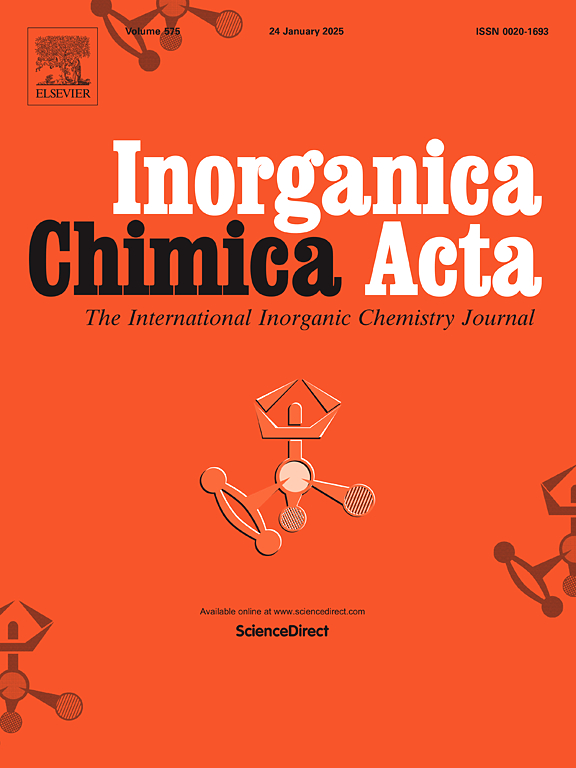Harnessing the light: The role of Polyoxometalates porphyrin based metal organic framework in CO2 reduction
IF 2.7
3区 化学
Q2 CHEMISTRY, INORGANIC & NUCLEAR
引用次数: 0
Abstract
The Photocatalytic reduction of CO2 to formic acid represents a promising strategy for mitigating the CO2 emission. In the current study, we use the Metal organic framework (MOFs) namely (MOF@VP) incorporated with Zn (II) and redox-active Vanadium centers V(V)/V(VI) for CO2 reduction. Thermogravimetric analysis (TGA) and FT-IR spectroscopy confirmed efficient CO2 adsorption with a maximum adsorption capacity of 0.020 mmol/g and a desorption rate of 20 %. The Photocatalytic CO2 reduction mechanism was investigated, demonstrating that MOF@VP facilitates the conversion of CO2 to formic acid via electron transfer with the TEOA (Tri-ethanolamine) as a sacrificial reagent. Cyclic voltammetry revealed enhanced electrochemical activity in the presence of CO2 further supporting the catalytic reduction mechanism. GC–MS analysis confirmed the formation of formic acid as a dominant product. The stability and Regeneration tests showed that the MOF@VP retained its efficiency and thermal stability after multiple cycles. These findings highlight the potential of using MOF@VP as a robust and efficient catalyst for CO2 reduction, addressing key challenges in catalyst performance and longevity.

求助全文
约1分钟内获得全文
求助全文
来源期刊

Inorganica Chimica Acta
化学-无机化学与核化学
CiteScore
6.00
自引率
3.60%
发文量
440
审稿时长
35 days
期刊介绍:
Inorganica Chimica Acta is an established international forum for all aspects of advanced Inorganic Chemistry. Original papers of high scientific level and interest are published in the form of Articles and Reviews.
Topics covered include:
• chemistry of the main group elements and the d- and f-block metals, including the synthesis, characterization and reactivity of coordination, organometallic, biomimetic, supramolecular coordination compounds, including associated computational studies;
• synthesis, physico-chemical properties, applications of molecule-based nano-scaled clusters and nanomaterials designed using the principles of coordination chemistry, as well as coordination polymers (CPs), metal-organic frameworks (MOFs), metal-organic polyhedra (MPOs);
• reaction mechanisms and physico-chemical investigations computational studies of metalloenzymes and their models;
• applications of inorganic compounds, metallodrugs and molecule-based materials.
Papers composed primarily of structural reports will typically not be considered for publication.
 求助内容:
求助内容: 应助结果提醒方式:
应助结果提醒方式:


